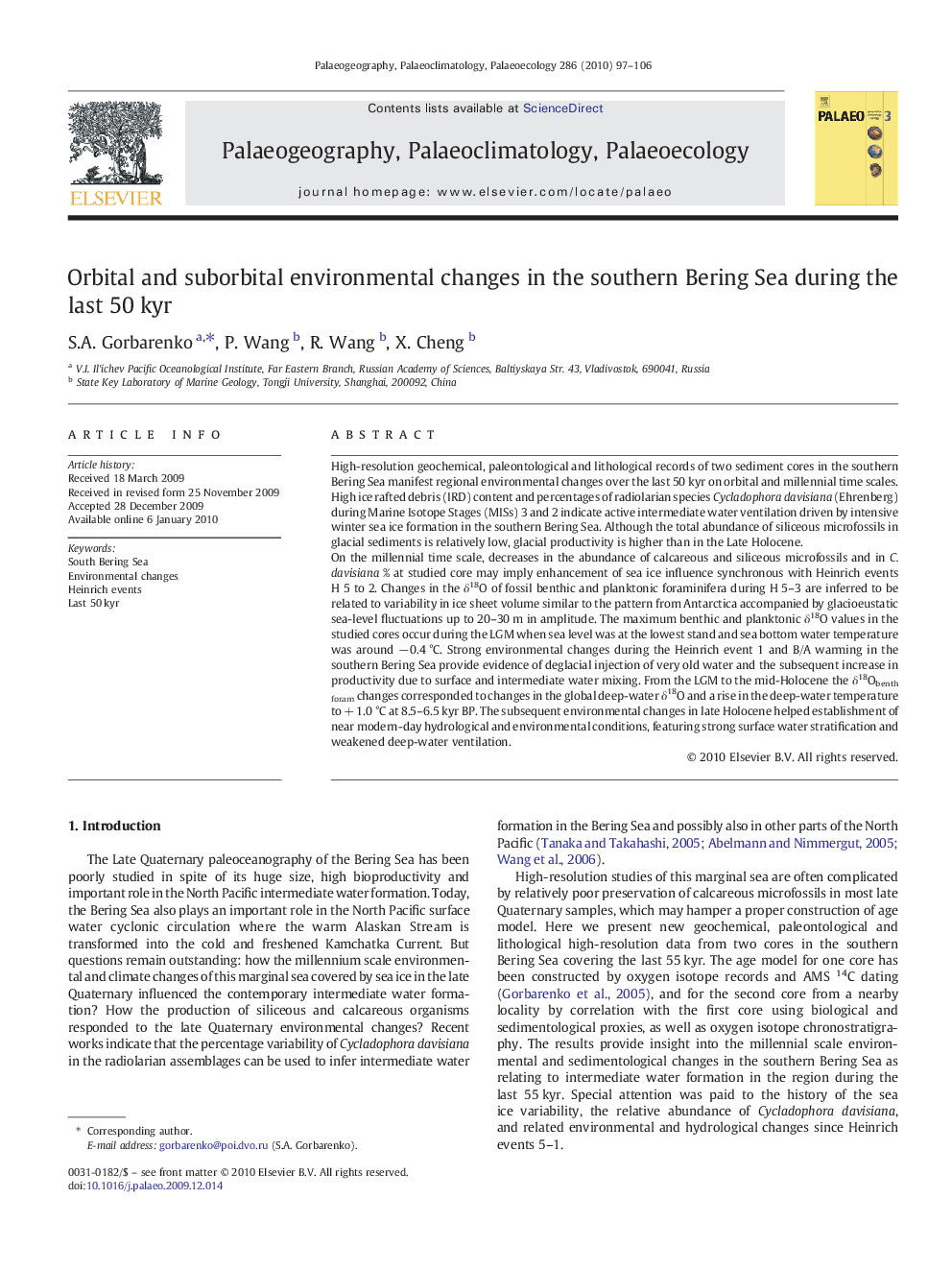| کد مقاله | کد نشریه | سال انتشار | مقاله انگلیسی | نسخه تمام متن |
|---|---|---|---|---|
| 4467889 | 1622286 | 2010 | 10 صفحه PDF | دانلود رایگان |

High-resolution geochemical, paleontological and lithological records of two sediment cores in the southern Bering Sea manifest regional environmental changes over the last 50 kyr on orbital and millennial time scales. High ice rafted debris (IRD) content and percentages of radiolarian species Cycladophora davisiana (Ehrenberg) during Marine Isotope Stages (MISs) 3 and 2 indicate active intermediate water ventilation driven by intensive winter sea ice formation in the southern Bering Sea. Although the total abundance of siliceous microfossils in glacial sediments is relatively low, glacial productivity is higher than in the Late Holocene.On the millennial time scale, decreases in the abundance of calcareous and siliceous microfossils and in C.davisiana % at studied core may imply enhancement of sea ice influence synchronous with Heinrich events H 5 to 2. Changes in the δ18O of fossil benthic and planktonic foraminifera during H 5–3 are inferred to be related to variability in ice sheet volume similar to the pattern from Antarctica accompanied by glacioeustatic sea-level fluctuations up to 20–30 m in amplitude. The maximum benthic and planktonic δ18O values in the studied cores occur during the LGM when sea level was at the lowest stand and sea bottom water temperature was around − 0.4 °C. Strong environmental changes during the Heinrich event 1 and B/A warming in the southern Bering Sea provide evidence of deglacial injection of very old water and the subsequent increase in productivity due to surface and intermediate water mixing. From the LGM to the mid-Holocene the δ18Obenth foram changes corresponded to changes in the global deep-water δ18O and a rise in the deep-water temperature to + 1.0 °C at 8.5–6.5 kyr BP. The subsequent environmental changes in late Holocene helped establishment of near modern-day hydrological and environmental conditions, featuring strong surface water stratification and weakened deep-water ventilation.
Journal: Palaeogeography, Palaeoclimatology, Palaeoecology - Volume 286, Issues 1–2, 1 February 2010, Pages 97–106